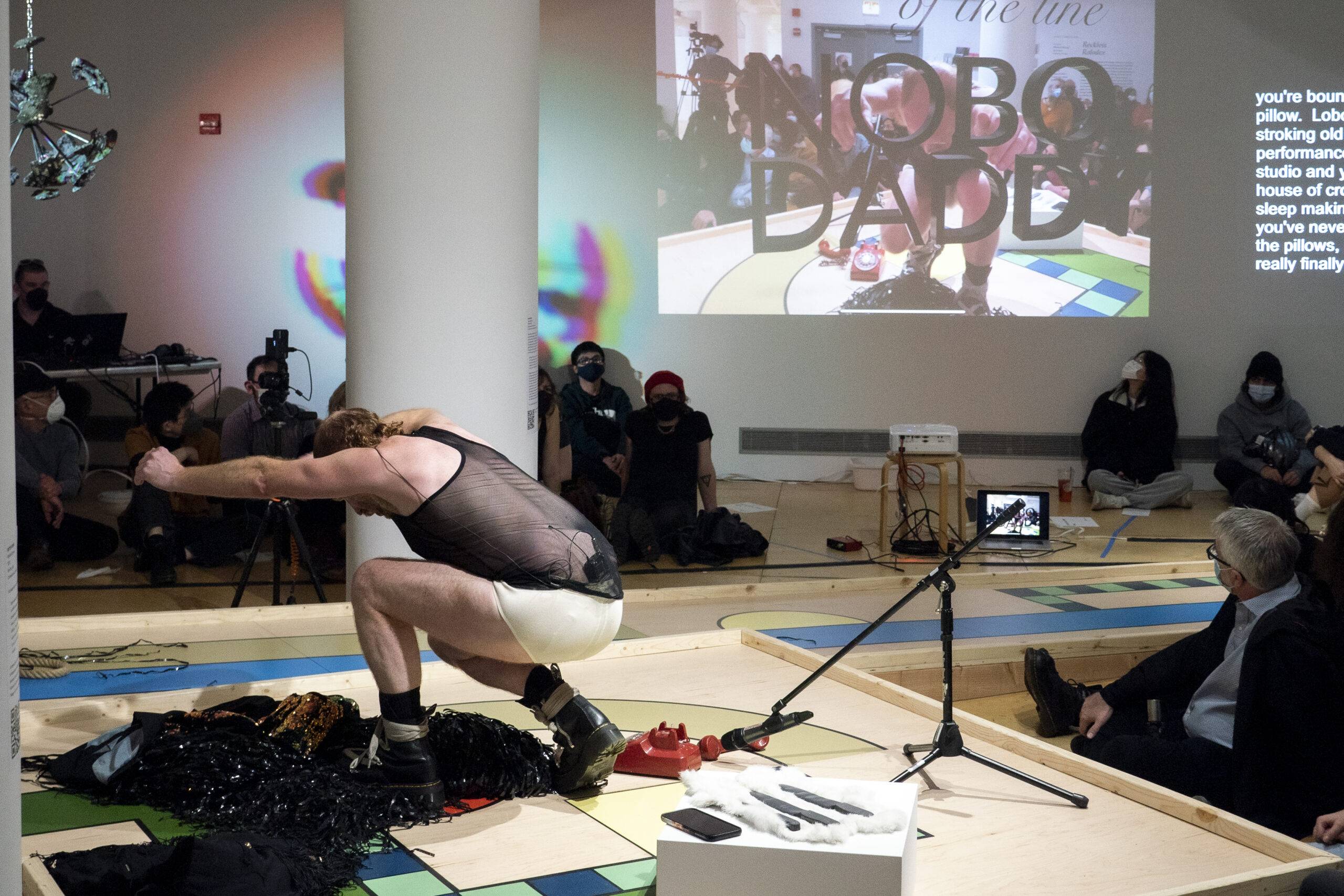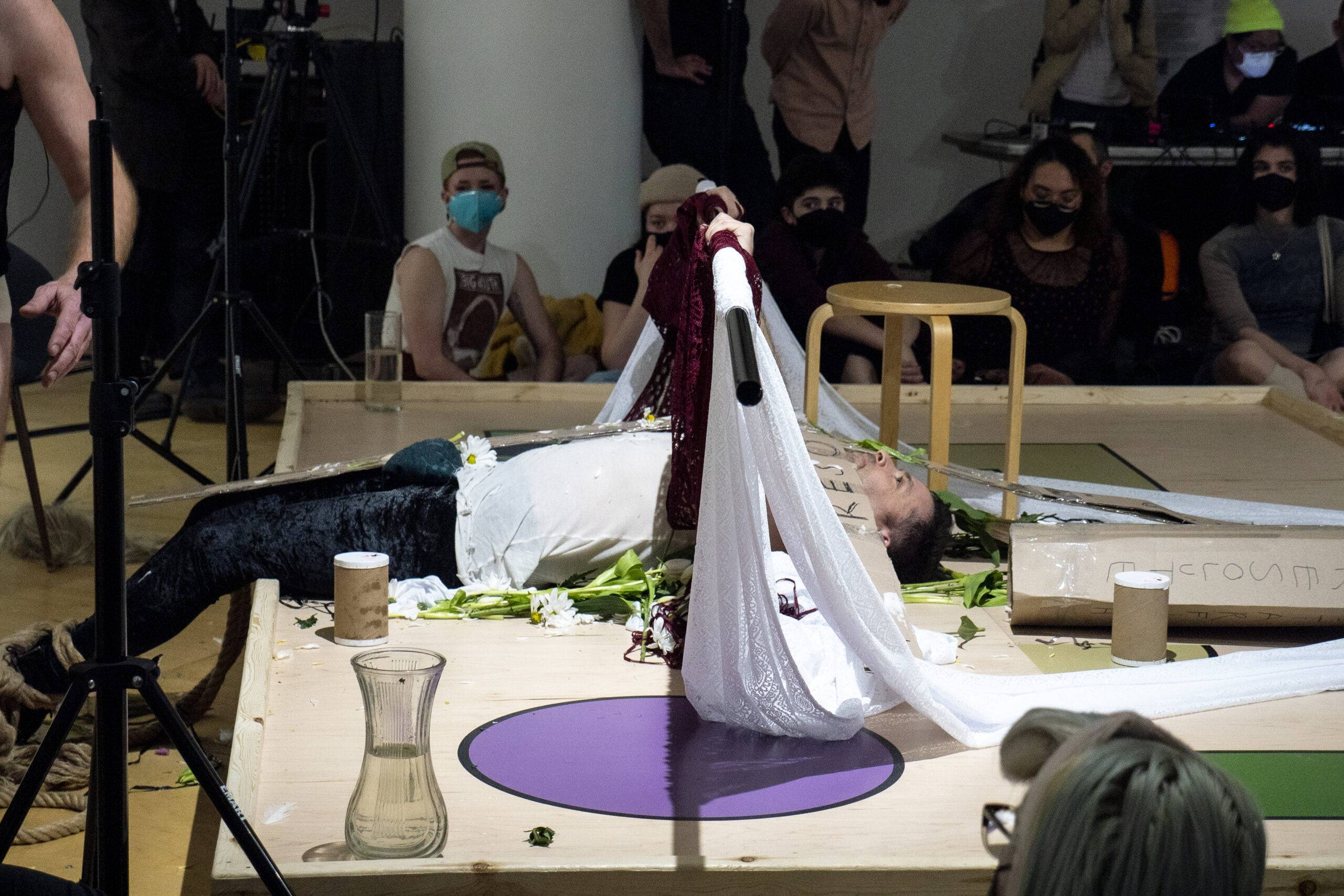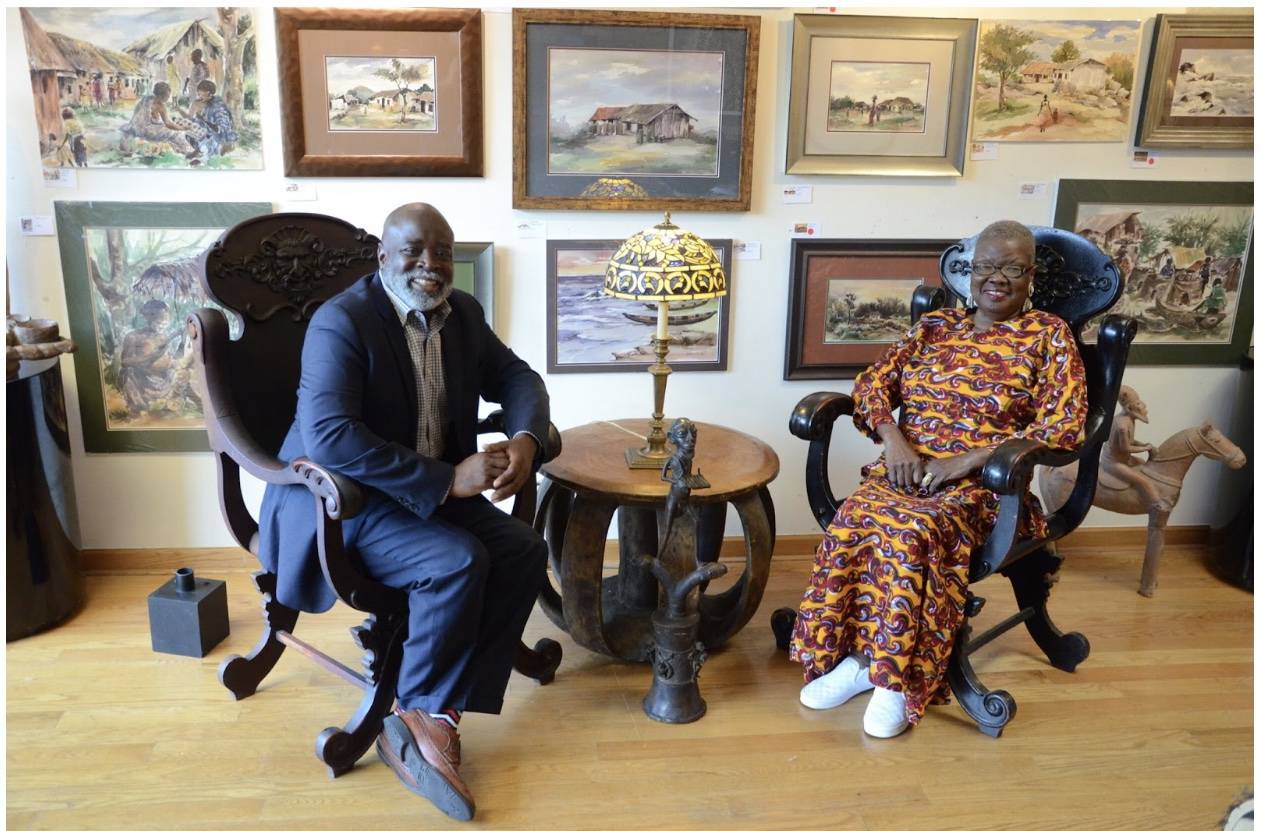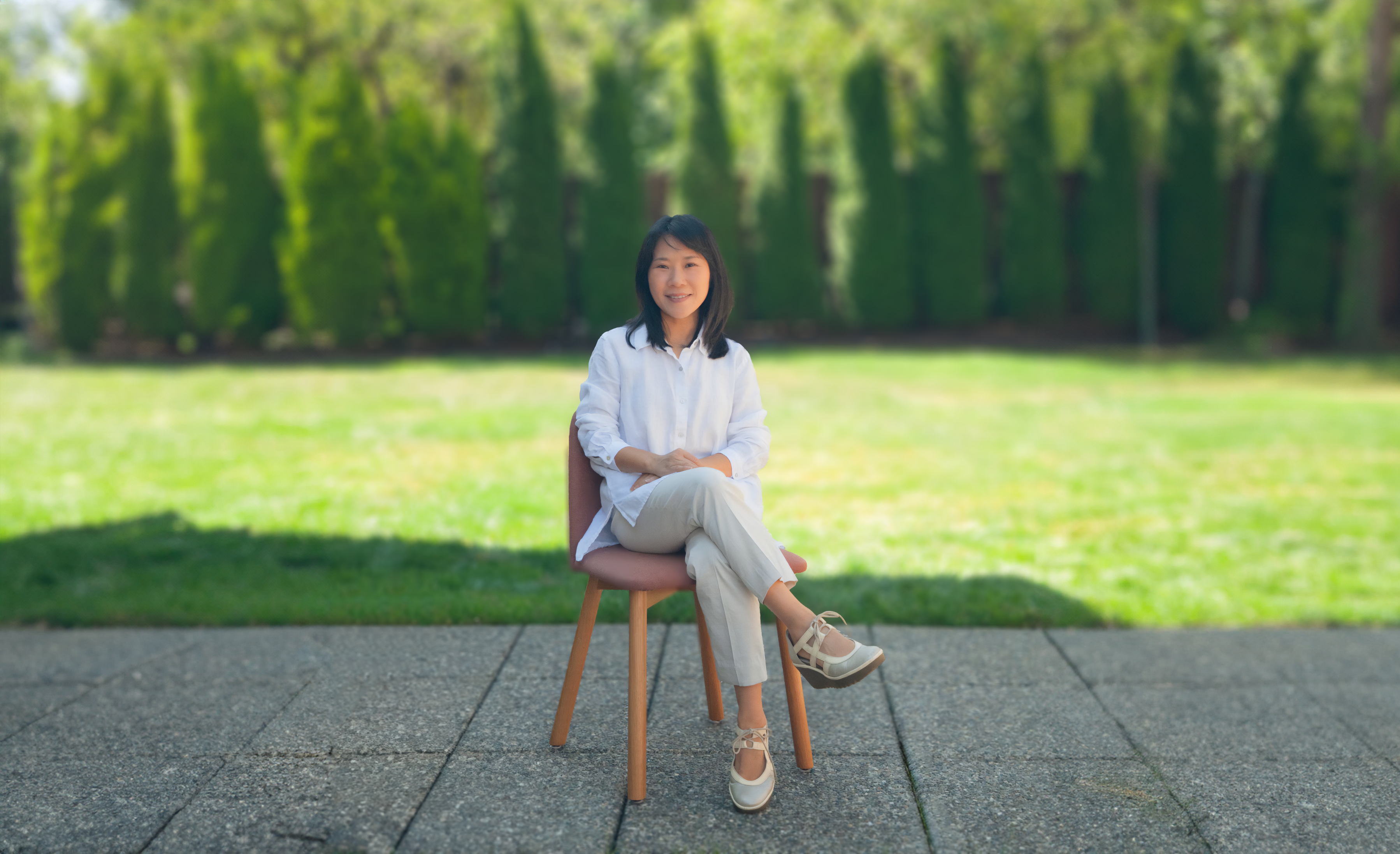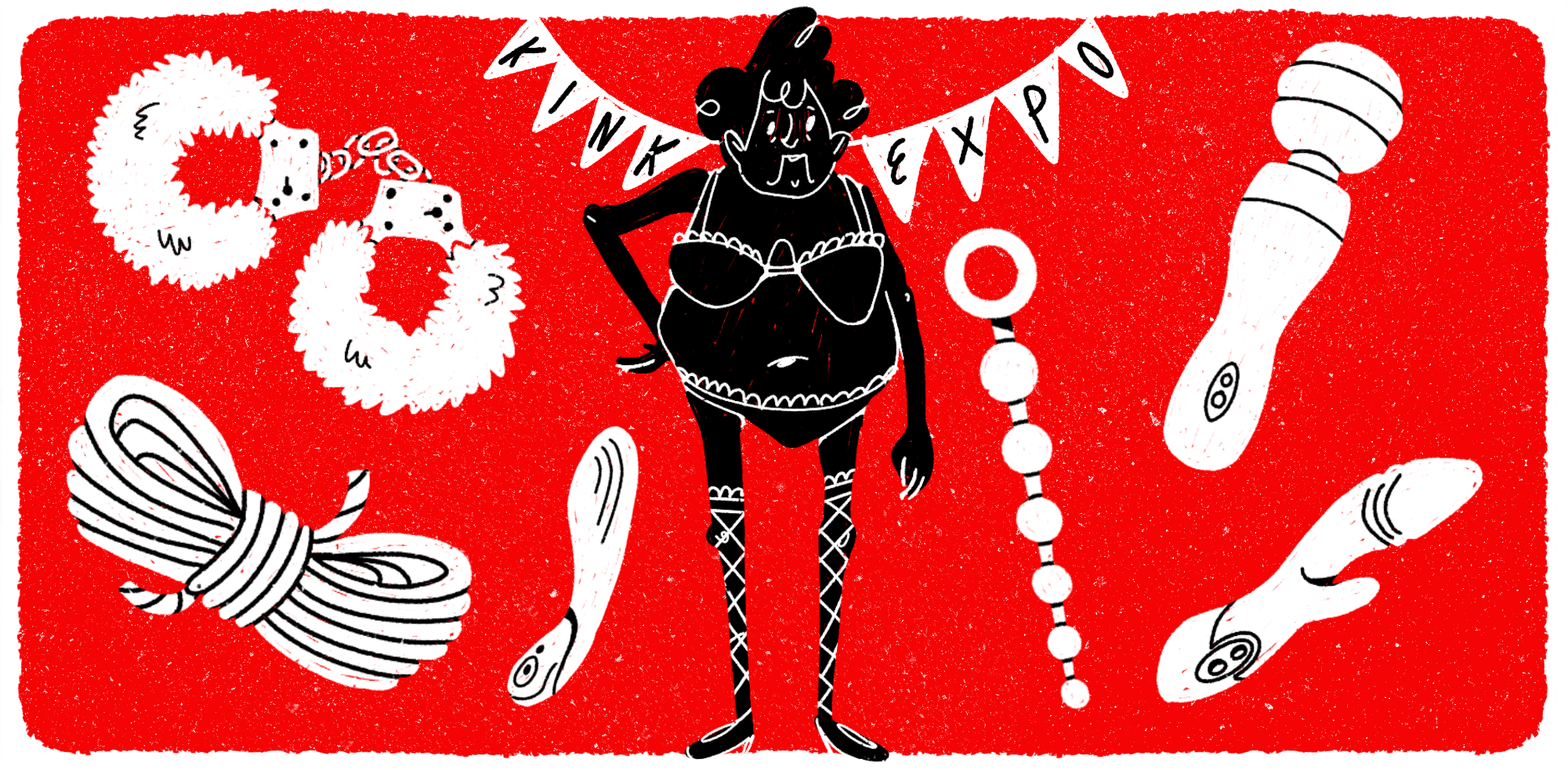Lawrence Steger, who was largely unknown outside of the LGBT+ community, was brought to life by Anatomical Theatres of Mixed Reality (ATOM-r)’s performance, “I Love the Dead.” This collaboration between Mark Jeffery and Judd Morrissey integrated augmented reality (AR) into their live performance in Gallery 400 on Feb. 14, 2023. “I Love the Dead,” drawing reference from Alice Cooper’s song, paid tribute to Steger by narrating the dialogues of a queer couple where one of them was a ghost, which may symbolize Steger. The story or narrative did not seem to be the main focus, but the piece was more about collective emotions. The Chicago Tribune described Steger as “one of the most important, and most influential, performance artists in Chicago during the late 1980s and 90s.” Stegger passed away in 1999 due to complications from AIDS.
The homage to Steger as a deceased figure was clear from the title and by repeatedly singing Cooper’s song — which expressed passion from the necrophilism — during the performance. By exploring societal taboos, the performance externalized passion from gender and sexual minority groups.
Unlike a traditional theater, Gallery 400 is a gallery space situated in the Art and Exhibition Hall of University of Illinois at Chicago. The transformed space for theatrical use caught my immediate attention. Edie Fake designed the stage pattern drawing influences from his identity as a transgender activist. The T-shaped raised stage was placed diagonally with two extra square shapes protruding on both sides unsymmetrically. This asymmetry divided the space into three parts, separating audiences across different areas. The raised stage enhanced the closeness between the performer and the audience, unlike a conventional high-rise theater stage that separated the two both physically and psychologically.
Commenting on this stage design, Morrissey said, “The stage and its placement in the gallery create a decentralized environment with multiple perspectives and blind spots. We integrated the projections, which mainly serve to reveal virtual materials, to enhance the multiplicity of the arranged space. It really was impossible to make everything visible all of the time so we had to work with that as a creative constraint.”
“I Love the Dead,” as an extension to the on-site exhibition “Reckless Rolodex,” a show curated by Matthew Goulish, Lin Hixson, and Caroline Picard that revisited Steger’s legacy. Expanding the non-traditional theatrical setting, Jeffery and Morrissey used AR and projections to create an extra layer of virtual space. The white cube space isolated the performance from the real world, while AR emphasized this virtuality.
Typical of ATOM-r’s practice, Jeffery and Morrissey incorporated 3D modeling of words throughAR technology. “The Tender: A Last Dance” (2021) was an example of using AR as something supernatural and non-human. The AR-built models of buildings with a simulated texture. This design helped audiences jump back and forth between the real-life and theatrical world, whereas “I Love the Dead ” dragged me into another virtual experience completely. At this point, I lost my connection to Steger as one who once existed in the real world. Jeffery’s role as a ghost, navigated in front of the AR-created word “NOBODADDY” through projections. This portmanteau, referring to “nobody” and “daddy,” is the anthropomorphic Christian God as a dictatorial figure rooted from William Blake’s poem “To Nobodaddy.”
As Morrissey mentioned, the cross as the props and the word are all symbols in relation to Steger’s Catholic identity. He further commented: “This is a word I am working with more generally and in the specific context of the performance. Using Blake invokes excess which is meaningful to Larry’s work. In our case also pointing to ‘daddy’ as an identification in queer culture. Larry was both a line-crossing queer artist and a Catholic. The spectral figure of the nobodaddy brings together poetry, excess, studliness, religion, and camp. I much prefer it to ‘daddy.’”
When extracting certain words and building them into AR, the word in the projection could lose its original meaning as it appeared alienated from the world. This decontextualization offered a new meaning and a form through an abstract linguistic context. I understood Jeffery’s interaction with the AR as a way to convey something supernatural and non-human. But the concreteness of language and words created a paradox for me since it also weakened the abstraction. People would definitely associate the word “NOBODADDY” with a certain context or would try to figure out the meaning of the word they are unfamiliar with.
This linguistic paradox was furthered with the ghost character in theater, as Sarah Outterson-Murphy’s article “Remember me: The Ghost and its spectators in Hamlet,” said: “Stage ghosts embody a theatrical paradox. The liminal body of a stage ghost is visible to playgoers and yet often invisible to fellow characters, never fully the disembodied spirit it represents nor merely the ordinary body of an actor.”
“I Love the Dead” played with this paradox as Steger existed through a performer. Traditionally, the stage ghost functions as a very important element in theater and narration, and it reveals the otherworldly side of a character.
Expanding this idea, ghostliness also shows “how theatrical performances carry meaning from the past into the present,” said Outterson-Murphy. “I Love the Dead” reversed the idea. Morrissey, as the human figure with lines, contextualized Jeffery as the ghost character’s behavior. As Jeffery’s character does not have lines before the death of Morrissey’s character, Morrissey was the intermediate character between the audience and the ghost figure or the historical illusion of Steger.
Morrissey and Jeffery traced some specific connections to Steger: “We lived on Chestnut Street, though at different times, and he also once performed with Ron Athey — an American artist who use body to explore themes about sexuality — in another complex where Jeffery and I lived. We are further connected by queerness, the impact of HIV, AIDS, and our overlapping ways of approaching sexuality and desire. We performed in Links Hall, and he frequently performed in its underground area, Lower Links, so our performances were all interrupted by the loud passing of the red line whether we were at train-level or below. All of these very specific connections play themselves out literally and figuratively through the language of the performance, its crosses, crowns, and red lines.” Therefore symbolic props, like the beam of red line, are frequently used on the stage to resemble those connections.
The performance explores queerness and love and how they transcend across time. It is not a hollow work underneath with technology on top of everything. Indeed, the AR, especially the chosen words rooted in poems and religious references in AR, made the visual even more classic and it fits into the messages to Steger, who still remained in the physical world twenty-four years behind us but also living with us in some way. “I Love the Dead” created a looming of history and a sense of personal emotion that night in Gallery 400 as well as in Chestnut Street.
As a monologue in the work depicts: “Lawrence. Sir. You were never buried deep in me treasure though you are. Nor I and you only now in this trans-historical crush of space it seems that we might nearly cross into one another. By estimating reasonable accuracy the sequence of our follow spots. A pattern in which we are always ahead or behind and never appear simultaneously in the glorious simplicity of adjacent black boxes, but are both shaking by the same rumbling.”
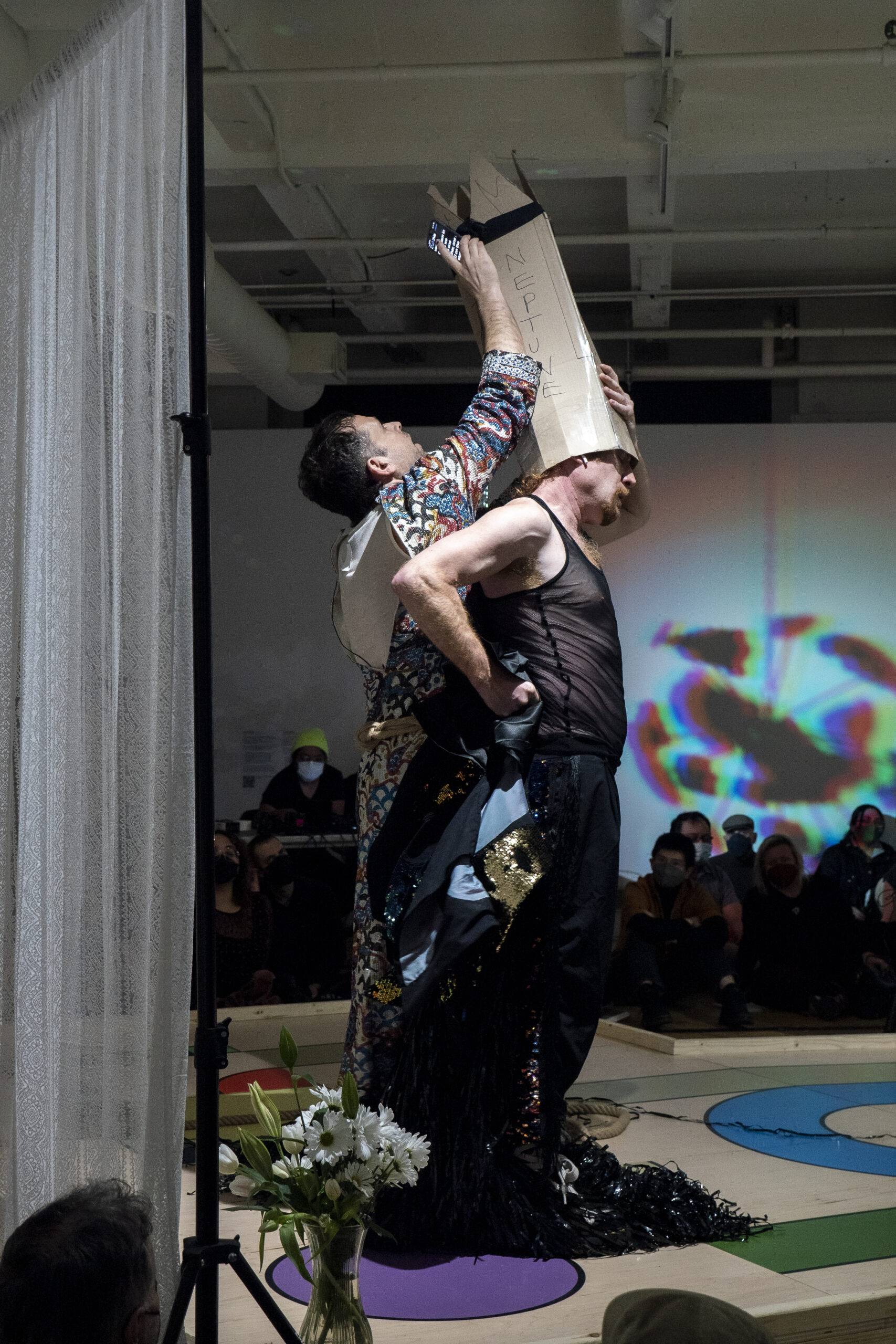
Morrissey reads lines on the phone as a tool to communicate with Jeffery “the ghost.” Photo by Ji Yang.
Jiarui Li (BFA 2023) is a painting and drawing student who learns writing as a hobby.

